Genealogy through Gingerbread: Using the Huntley & Palmers archive to research family history

Throughout the summer, ourselves and Reading Museum have been celebrating the 200 year anniversary of Huntley & Palmers, the biscuit company which was based in Reading and is intertwined with its cultural history. Now that our programme of events is winding up, we’re looking forward to how people in Reading and around the world can continue to engage with the archive, and in particular, research their family history.
Family memories of Huntley & Palmers
With our exhibition ‘Biscuit Town: 200 Years of Huntley & Palmers in Reading’ coming to an end this month (but now available in online form), we’ve been reflecting on how our visitors have engaged with the narratives on display. What we’ve learned is that anyone living in Reading in the mid-20th century has some recollection of the company. We’ve been thrilled to hear countless fond anecdotes of family members who worked in the factory, memories of the biscuity scents that pervaded the streets of Reading, and stories of teenagers stuffing themselves with broken biscuits on a Friday afternoon in the late 1960s. Our memory board within the exhibition space has been constantly populated with new recollections. The company may have invented the ginger nut and iced gems, but our visitors wanted to reflect on one thing above all: family.
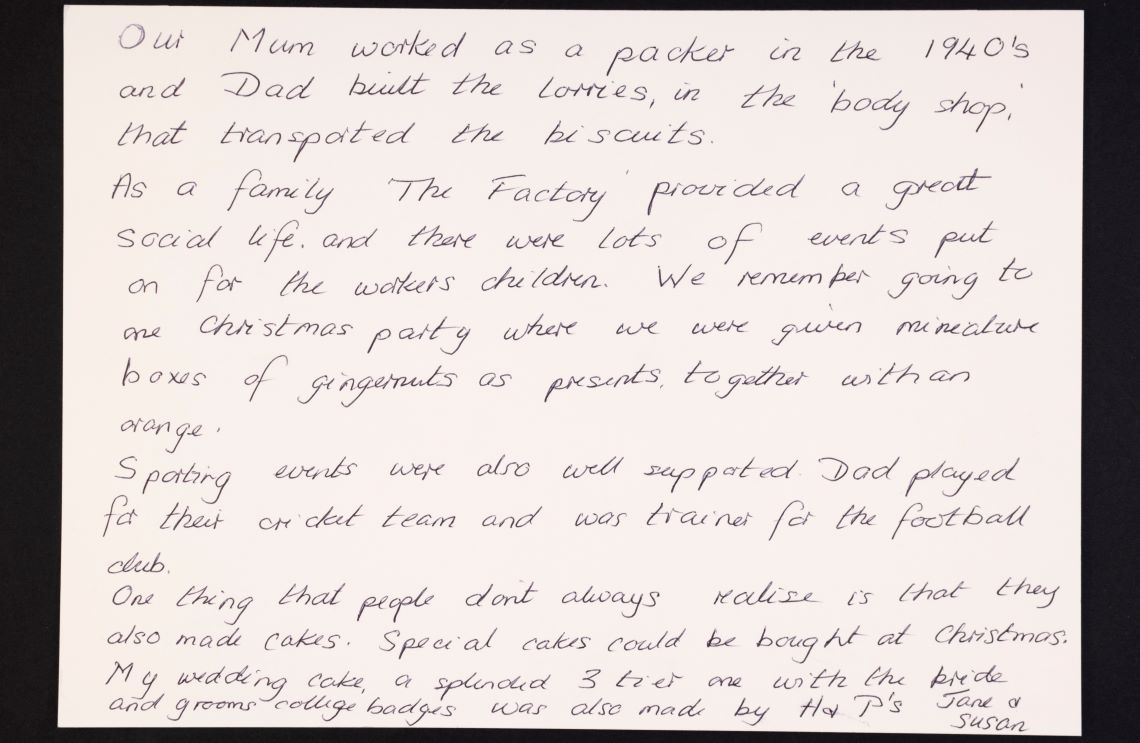
Yet our exploration of family links into Huntley & Palmers doesn’t end with the exhibition. We hold a vast archive which the displays only provide a tiny peek into. Within this archive are a number of tools to help the curious researcher trace their heritage and link to Biscuit Town. Whether you know the full occupation of a relative working for Huntley & Palmers, or just have a vague recollection of Grandma Joan coming home smelling of ginger nuts, this blog aims to point you in the right direction when using the archive to learn more about your family’s history.
Departmental ledgers and the reading room index
By far the most valuable resource in the archive in terms of the sheer volume of staff names, the departmental ledgers cover the period 1858 – 1870. They clearly list the date on which employment started, as well as a ‘remarks’ column which usually indicates for how many years they continued to work for the company. It will often be the case that the year in which employment commenced was also the year in which the individual moved to Reading, as this was a period of mass migration to the town for purposes of working within the biscuit factory. Census records can be used to support these findings; if, for example, a family member was living elsewhere in 1851 and then lived in Reading as a “biscuit factory worker” in 1861, these ledgers may indicate which department they worked for.

In addition, the departmental ledgers list the wages earned by each individual, which can suggest the standard of living they experienced. For the exhibition, we used the ledgers to highlight Henry Gibbs, a 14 year old boy who moved to Reading by himself in 1861. By 1863 he was earning 16 shillings a week in the biscuit factory, the average wage for an unskilled labourer at the time.
Finding your relative within the departmental ledgers doesn’t have to involve trawling through every single tome in the archive. Within our reading room, we have an index of staff names which can be scanned through in just a few minutes. The index indicates the names that appear in each ledger. Some first names are listed; naturally these are more likely to appear in ledgers for higher paid staff. Using this index will not only save you time, it also helps to preserve the archives as we will only need to produce the ledger most relevant to you.
Archive reference numbers: HP OS 432 – HP OS 437, HP OS 523. The index does not have a reference number but can be freely consulted upon a visit to the reading room.
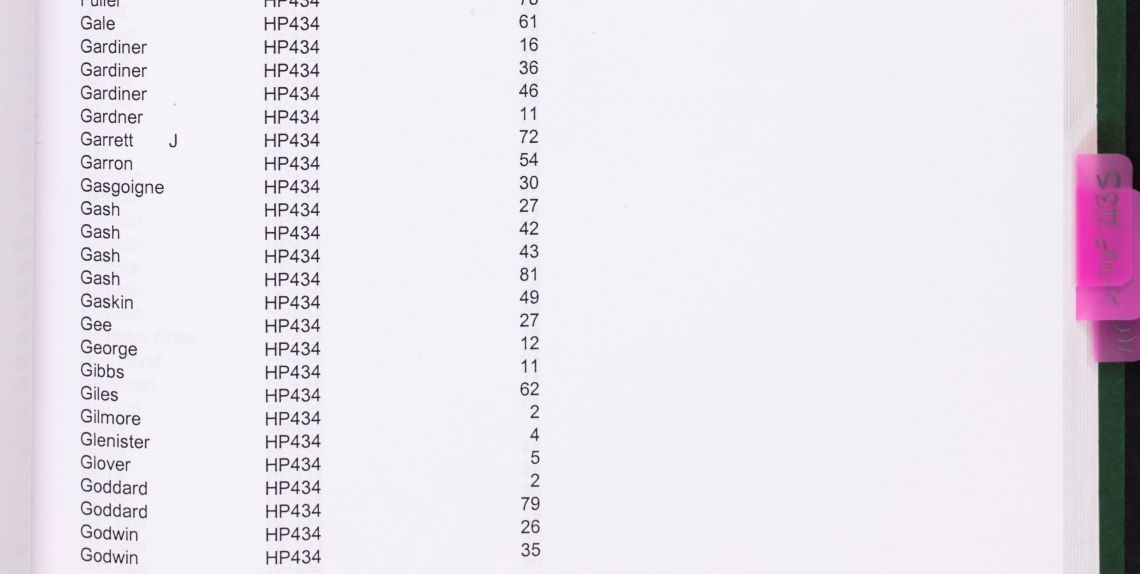
Allowance books
The broad selection of registers within the archive are not only useful for researching family members during their period of employment, but also afterwards. In particular, “allowance” registers record payments provided to widows of salaried staff, as well as pensions paid to former workers. The pension books give a date of retirement and monthly payment figures, as well as sometimes listing a date of death. As a result, these records can help track a family member’s wellbeing beyond their years of employment. Like the departmental ledgers, they are listed within the reading room index, and usually contain first names.
Archive reference numbers: HP OS 425, HP OS 427

First Name News
Many of the Huntley & Palmers memories we have gathered over the past few months have related to a family member working in the factory in the mid 20th century. A key resource for learning more about these individuals is First Name News, a magazine distributed internally to staff. The run we hold ranges from 1954 – 1964. It includes a wide variety of content, such as messages from the Palmer family, new innovations of biscuit manufacturing, and news of the company’s recreational club.
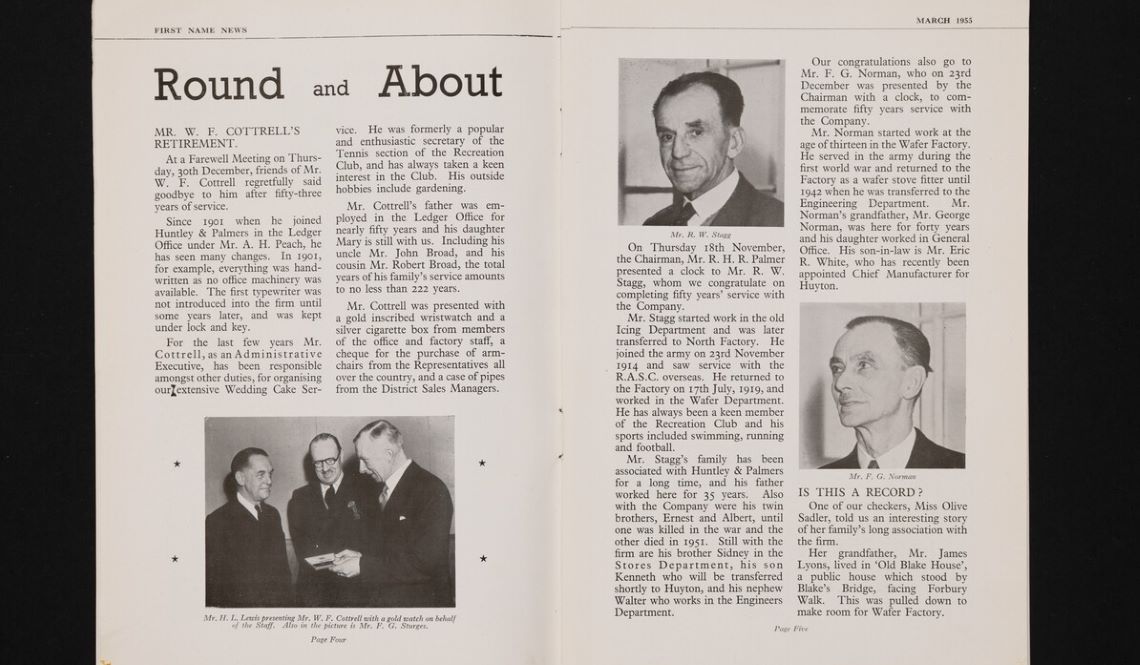
Of particular interest to us is the weddings, births, long service, retirements and obituaries section. As these capture different moments in the lives of Huntley & Palmers employees, they provide details on several generations of workers. The weddings segment features photographs of the bride and groom, as well as the date and location of the ceremony. It was around this time that Huntley & Palmers began to employ married women, and so the majority of these newlyweds would have likely kept their jobs. Long service announcements give more detail into the work the employee undertook, as well as the gift they received to commemorate the occasion; often a clock or armchair.
Archive reference number: HP 315 (covers a range of volumes)
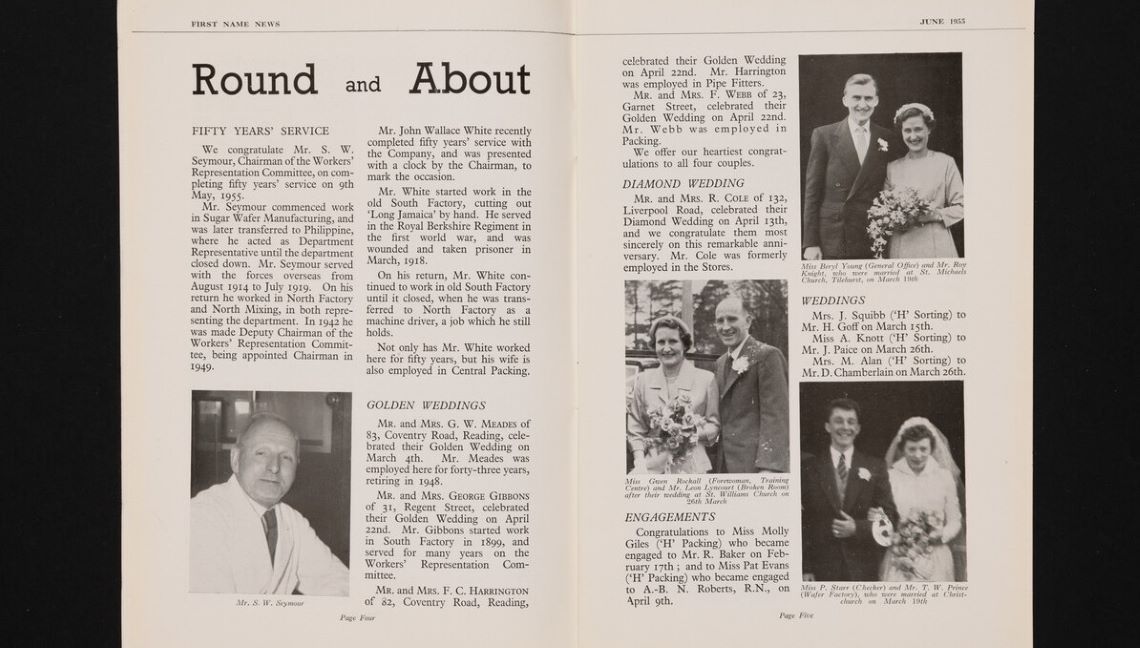
Cricket scorecards
Although our collection of Huntley & Palmers material is a business archive, it also contains a range of records relating to recreational activity. The biscuit factory’s cricket team was particularly renowned, becoming an essential part of company culture as early as the 1880s when a cricket ground was established in King’s Meadow. If you know a family member was one of the many who represented the club’s cricket team, then the collection of cricket scorecards is worth a look. As well as matches against other companies, and even a prolific yearly fixture against the MCC, they also held an internal league wherein departments would face off against one another. Therefore, the scorecards can be a route to learning the area of the factory in which your ancestor worked.
Archive reference numbers: HP OS 604 – 610, HP OS 676 – 677, HP OS 907 – 911.

Fire Brigade drill reports
Some elements of the archive can also act as a continuation of research, rather than a starting point. Huntley & Palmers was such a vast organisation that they required expertise far beyond biscuit manufacture, and even maintained their own fire brigade. If, for example, you knew that an ancestor was part of this team, archives such as the fire brigade drill reports give a detailed look into their daily activities and work.
Archive reference numbers: HP OS 487 – 488.
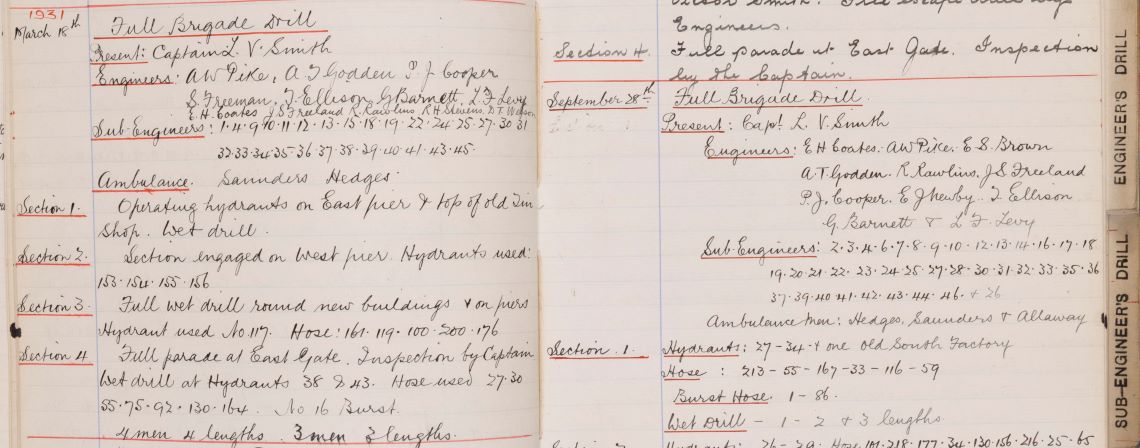
I want to use the archive to research my family history. What next?
We are more than happy for professional and amateur researchers alike to use the Huntley and Palmers archive to further their investigations. If you have never used archives in person before, then this is a great place to start. Simply use this list to identify the documents you would like to look at, then email specialcollections@reading.ac.uk to book a spot in our reading room. If you plan to use the index of staff names mentioned earlier, we suggest booking a space in advance and then ordering your archive documents during your visit. We look forward to seeing you!